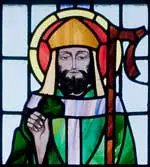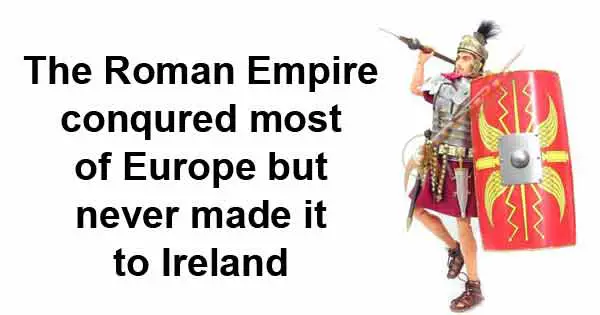The Romans never got round to conquering Ireland, but that doesn’t mean they didn’t look greedily across the sea and think about adding its rich, fertile land to their already huge empire.
It would have been a relatively easy task for them. They had swept across Europe for nearly a thousand years conquering all before them. Most of Britain was effectively a Roman province for more than 400 years.
A short sea journey from Wales, northern England or southern Scotland would have taken the Roman legions to Ireland’s coast. If they had made that journey they would have almost certainly been successful. Roman military might have proved irresistible, and Ireland was made up of localised tribal factions with no centralised system of defence.
So what stopped the Romans? Well, for once, a little luck in military matters may have been on the side of the Irish.
By the time the Romans had reached Britain, their empire covered most of Western Europe and their resources were becoming stretched. For most of the time they spent in Britain, they were more concerned with holding on to what they had rather than expanding further.
Uprisings among Scottish tribes were a thorn in the side of the Romans and showed them how troublesome Celts could be. Nevertheless, there was a point when the Romans did seriously consider an invasion.
In 82AD Rome’s military governor in Britain was Gnaeus Julius Agricola. He was a brilliant campaigner who had helped to defeat the armies of England’s Queen Boudica in 61AD and then gone on to subdue the country and bring it safely under Roman rule.
Irish king offered to help Romans conquer Ireland
According to the Roman historian Tacitus, Agricola then turned his attention to Ireland. The details are a little vague but Tacitus claimed that a minor Irish king, who had lost his throne in battle, approached Agricola and offered to help him conquer Ireland, providing him with local knowledge and contacts.
Ireland was known to both the ancients Greeks and Romans, although neither ever tried to conquer. The Roman poet Homer mentions it in his epic The Iliad where he describes it rather unflatteringly as “a land of fog and gloom – beyond it the Sea of Death”.
Agricola considered the idea carefully and following his conversations with the deposed Irish king, considered that Ireland could be subdued with a single legion.
The size of a Roman legion varied over time but may have been about 5,000 men in the first century AD.
Agricola never got to test whether one legion would be enough because his plans were overtaken by events. There was a mutiny within his own army to deal with first, and then he had to deal with rebellions from the Picts in Scotland.
Once Agricola had dealt with the troublesome Picts, he was recalled to Rome by Emperor Domitian.
That close shave was the nearest the Romans ever got to invading Ireland. They never considered it again. They also gave up any idea of conquering Scotland. Instead, they built Hadrian’s Wall across the north of England to keep out the marauding Picts.
Irish made smash and grab raids on Britain
Although the Romans didn’t conquer Ireland, they did trade with it, as evidenced by the numerous Roman coins and artefacts found during excavations in Ireland.

Many of these coins and artefacts may also have come from raids rather than trade. The Romans may have decided against invading Ireland but the Irish had no such qualms about invading Roman Britain. They specialised in quick in-and-out raids where they attacked a town or community, grabbed whatever they could and returned back to Ireland as quickly as possible.
One of the main purposes of these raids was to capture slaves. One young boy who was captured was taken back to the area now known as Co Antrim. He went on to become one of the most important figures in Irish history. His Roman name was Palladius Patricius…but we know him better as St Patrick.
